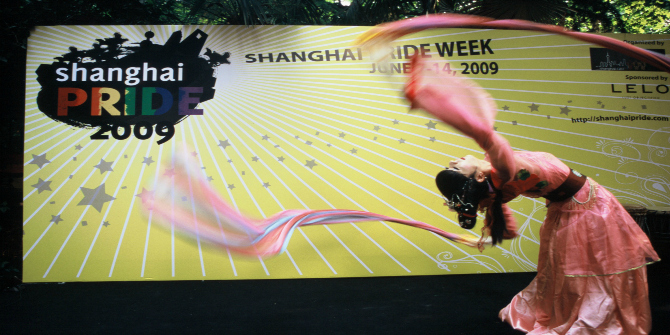This book provides a readable and detailed recollection of Hillary Clinton’s stalwart performance both as a Senator and as Secretary of State, finds Ruth Garland. A podcast of an LSE event with author Robin Renwick is available to listen to at the foot of the review.
 Ready for Hillary? Portrait of a President in Waiting. Robin Renwick. Biteback Publishing. 2014.
Ready for Hillary? Portrait of a President in Waiting. Robin Renwick. Biteback Publishing. 2014.
Robin (now Lord) Renwick, was the British Ambassador to Washington when the Clintons arrived in the White House in 1993, and got to know them well. Taking his book title from the name of Hillary’s fundraising political action committee, this highly observant, congenial and well-connected witness takes us on an insider’s guided tour of Hillary’s political life.
It is clear that Renwick is an admirer of Hillary’s, noting her conviction and decisiveness when faced with political choices, her incredible stamina, resilience and work ethic, her intelligence and love of politics, and her ability to inspire loyalty and form long-lasting political friendships. The photo on the book cover shows Bill and Hillary looking optimistically into the distance, while Chelsea looks admiringly at her mother. Here is a rounded individual: wife, mother and visionary.
What is fascinating when contemplating the possibility of a woman becoming leader of the world’s most powerful nation, Hillary appears to have transcended her gender. She has come a long way. As First Lady she was ridiculed for her hair and dress sense, pursued over her business interests, humiliated when she failed to deliver healthcare reform, and criticised for being “controlling” and opinionated. Later, she had to publicly face the realisation that her husband had lied to her as well as everyone else about his affair with Monica Lewinsky. She came to see the press as her “nemesis” and, on arriving at the White House, made it harder for journalists to reach the President’s press secretary by blocking the access corridor.
Reading this book, any view of Hillary as anything but a politician, comes to seem like a category error. She was a young Republican at school, stood (albeit unsuccessfully) for School President, but was elected President of the Young Republicans at her college, Wellesley. She stood down over her support for civil rights, becoming an active Democrat and then successfully running as student President. As photos of her taken at the time show, she was defiantly un-groomed, but had the confidence to introduce herself to Bill Clinton in the library at Yale Law School in 1971 when she saw him looking at her, rather than wait for him to make the first move.
Given her clear political ambition as a young woman, it is interesting to observe how she deferred to Bill’s career aspirations, moving to Arkansas after Law School, where he became Governor in 1978. Renwick describes Hillary at this time as a “self-contained workaholic…not devoid of charm but rarely bothering to show it.”(p17) . Being a political wife did not come easily. Appearing on television with Bill during the Presidential campaign 1992, she got into trouble for saying “I’m not sitting here like Tammy Wynette” when faced with questions about Bill’s alleged affair with Gennifer Flowers. She had to apologise to Tammy Wynette and, Renwick tells us, was told by Bill’s campaign team to keep quiet from then on.
Much of the book is devoted to Hillary’s development as an electable politician, noting the point (on p53) when the power balance between the couple shifted decisively. On 12th February 1999, as Bill’s impeachment trial at the Senate was reaching its conclusion, she was, for the first time, seriously discussing the possibility of running as Senator for New York. After eight years as a Senator, her loss of the Democratic nomination to the younger, less experienced Obama is depicted as a shock; an aberration.
Of the 24 chapters in this book, it was chapter 8, “Running Against a Cult” which caught my attention because it reveals Robin Renwick’s otherwise well-disguised partisan preferences. He seems to have little time for Obama, whose performance on television is described as “vague and windy” in contrast to Hillary’s “mastery of the issues”(p76), while in private, he reveals, Obama can be “caustic, sarcastic and thin-skinned”(p85). As well as describing Obama’s campaign as a cult, the author airs (and appears to share) Hillary’s opinion that Obama’s speeches resembled “those of a Baptist preacher in a southern church, uplifting rhetoric devoid of content”(p86). He also seems to accept uncritically Hillary’s contention that the entire press corps was against her while Obama got a free ride. Even more dubious, is the suggestion that it was hard to oppose Obama because, as an African American, the Democratic establishment were scared of opposing him.
This book provides a readable and detailed recollection of Hillary’s stalwart performance both as a Senator and as Secretary of State. She is no isolationist, is prepared to tell allies where they are going wrong (Pakistan being a case in point), deeply pro-Israel, fond of Britain but seeing it largely as an irrelevance in the bigger picture, and believing that the world would be a better place if only other countries were more like America. What her vision for her country might be, and what inspires her as a politician, will have to wait for her campaign – assuming that she decides to run.
LSE Events Podcast: Will Hillary Clinton make history and become the first female President of the United States? Robin Renwick provides an invaluable insight into one of the most divisive figures in recent US political history.
Full details of the event are here.
[jwplayer mediaid=”26545″]
Ruth Garland is a researcher and PhD student in Media & Communications at the London School of Economics, having returned to study after 25 years working in media relations in publishing, broadcasting, public health and local government. She is researching into government communications. Read more reviews by Ruth.







